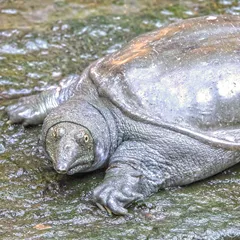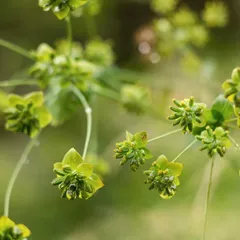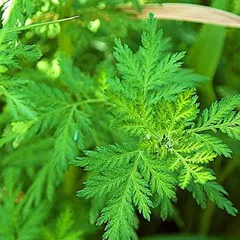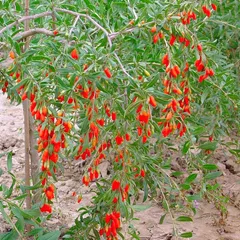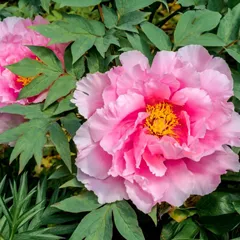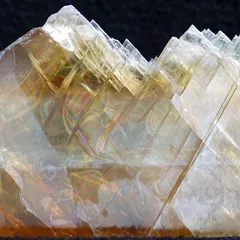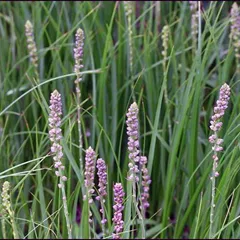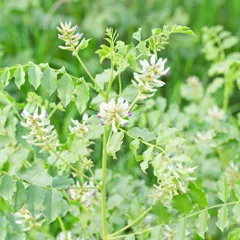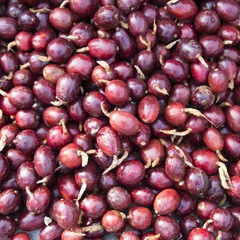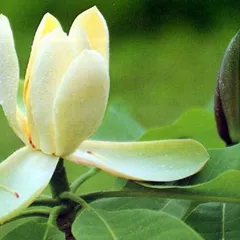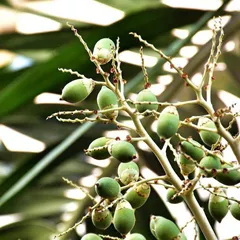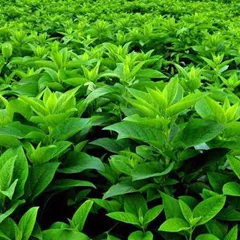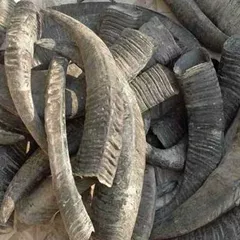Qing Gu San
Qing Gu San
Chinese: 清骨散
Pinyin: Qīng Gǔ Sàn
Other names: Cool the Bones Powder
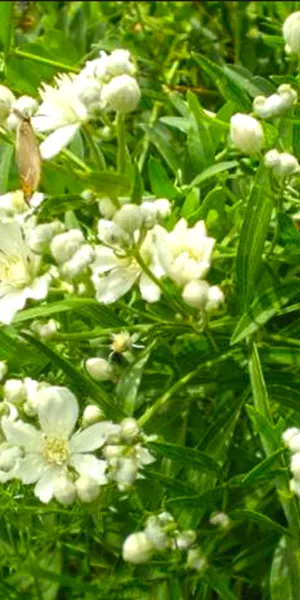

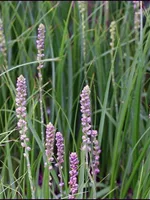
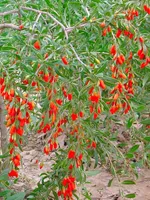




Qing Gu San
Qing Gu San
Chinese: 清骨散
Pinyin: Qīng Gǔ Sàn
Other names: Cool the Bones Powder
Number of ingredients: 8 herbs
Formula category: Formulas that clear Heat from Deficiency
Conditions for which it may be prescribed: TuberculosisPostwound fevers
- Clears Heat from Deficiency
- Alleviates steaming bone disorder
Source date: 1602 AD
Source book: Indispensable Tools for Pattern Treatment
The information provided here is not a replacement for a doctor. You shouldn't use it for the purpose of self-diagnosing or self-medicating but rather so you can have a more informed discussion with a professional TCM practitioner.
Qing Gu San is a 8-ingredient Chinese Medicine formula with Stellaria Roots (Yin Chai Hu) as a principal ingredient.
Invented in 1602 AD, it belongs to the category of formulas that clear Heat from Deficiency. Its main actions are: 1) clears Heat from Deficiency and 2) alleviates steaming bone disorder.
In Chinese Medicine health conditions are thought to arise due to "disharmonies" in the body as a system. These disharmonies are called "patterns" and the very purpose of herbal formulas is to fight them in order to restore the body's harmony.
In this case Qing Gu San is used by TCM practitioners to fight patterns like Kidney and Liver Yin Deficiency. From a Western Medicine standpoint, such patterns can give rise to a range of conditions such as tuberculosis or postwound fevers for instance.
On this page, after a detailed description of each of the eight ingredients in Qing Gu San, we review the patterns and conditions that Qing Gu San helps treat.
The eight ingredients in Qing Gu San
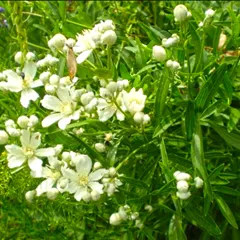
Yin Chai Hu is a king ingredient in Qing Gu San. Like the name indicates, it means it has more power than other ingredients in the formula.
1. Stellaria Roots (Yin Chai Hu)
Part used: Root
Nature: Cool
Meridian affinity: StomachKidneyLiver
Category: Herbs that cool the Blood
Yin Chai Hu is sweet and slightly cold. It reduces the fever from Yin Deficiency without any of the draining tendencies that could further injure Yin.
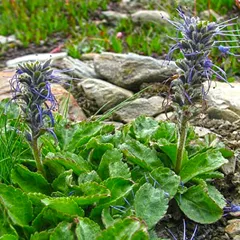
Hu Huang Lian is a deputy ingredient in Qing Gu San. This means it helps the king ingredient(s) treat the main pattern or it serves to treat a coexisting pattern.
2. Picrorhiza Rhizomes (Hu Huang Lian)
Part used: Rhizome
Nature: Cool
Taste(s): Bitter
Meridian affinity: StomachLarge intestineLiver
Category: Herbs that clear Heat and dry Dampness
Hu Huang Lian clears Heat from the Blood level. This is a principal substance for clearing Heat from Yin Deficiency and are especially useful in alleviating steaming bone disorder with sweating.
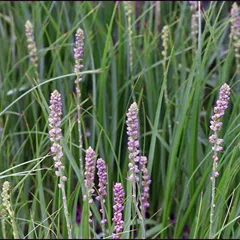
Zhi Mu is a deputy ingredient in Qing Gu San. This means it helps the king ingredient(s) treat the main pattern or it serves to treat a coexisting pattern.
3. Anemarrhena Rhizomes (Zhi Mu)
Part used: Dried rhizome
Nature: Cold
Meridian affinity: KidneyLungStomach
Category: Herbs that clear Heat and purge Fire and/or clear Summer Heat
Zhi Mu enriches the Yin and clears Heat from Kidney Yin Deficiency. This is a principal substance for clearing Heat from Yin Deficiency and are especially useful in alleviating steaming bone disorder with sweating.
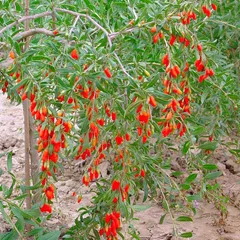
Di Gu Pi is a deputy ingredient in Qing Gu San. This means it helps the king ingredient(s) treat the main pattern or it serves to treat a coexisting pattern.
4. Goji Tree Root Bark (Di Gu Pi)
Part used: Dried root bark
Nature: Cold
Taste(s): Sweet
Meridian affinity: KidneyLiverLung
Category: Herbs that cool the Blood
Di Gu Pi clears lingering Heat from the Lungs above and Heat from Deficiency from the Liver and Kidneys below. This is a principal substance for clearing Heat from Yin Deficiency and are especially useful in alleviating steaming bone disorder with sweating.
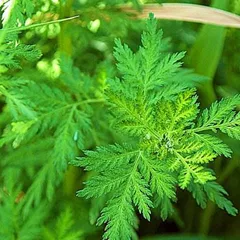
Qing Hao is an assistant ingredient in Qing Gu San. This means that it either serves to reinforces the effect of other ingredients or it moderates their toxicity.
5. Sweet Wormwood Herbs (Qing Hao)
Part used: Dried aerial parts
Nature: Cold
Taste(s): Bitter
Meridian affinity: GallbladderKidneyLiver
Category: Herbs that clear Heat and purge Fire and/or clear Summer HeatHerbs that clear Yin Deficiency Heat
Qing Hao drains Fire without injuring the Qi or Blood, and conducts Heat at the level of the bones outward to the level of the muscles and the Exterior.
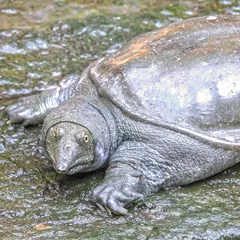
Bie Jia is an assistant ingredient in Qing Gu San. This means that it either serves to reinforces the effect of other ingredients or it moderates their toxicity.
6. Softshell Turtle Shells (Bie Jia)
Part used: Carapace
Nature: Neutral
Taste(s): Salty
Meridian affinity: KidneyLiver
Category: Tonic herbs for Yin Deficiency
Bie Jia is salty and cold. It enriches the Yin , anchors the errant Yang, and conducts actions of the other herbs into Yin (deep) levels of body.
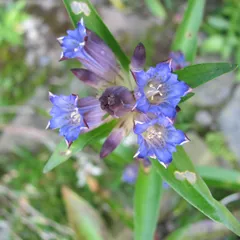
Qin Jiao is an assistant ingredient in Qing Gu San. This means that it either serves to reinforces the effect of other ingredients or it moderates their toxicity.
7. Gentian Roots (Qin Jiao)
Part used: Dried root
Nature: Cool
Meridian affinity: GallbladderStomachLiver
Category: Herbs that dispel Wind and Dampness
Qin Jiao clears Heat from Yin Deficiency, especially from the Liver and Gallbladder. The combination of Softshell turtle shell and Sweet wormwood vents Heat externally. It make them particularly useful for treating steaming bone disorder without sweating.
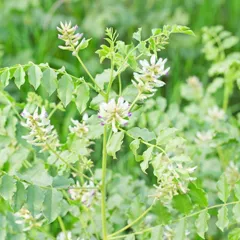
Gan Cao is an envoy ingredient in Qing Gu San. This means that it directs the formula towards certain area of the body and/or harmonizes the actions of other ingredients.
8. Liquorice (Gan Cao)
Part used: Dried root and rhizome
Nature: Neutral
Taste(s): Sweet
Meridian affinity: HeartLungSpleenStomach
Category: Tonic herbs for Qi Deficiency
In general Gan Cao's main actions are as follows: "Tonifies the Basal Qi and nourishes the Spleen Qi. Clears Heat and dispels toxicity. Moistens the Lungsexpel phlegm and stop coughing. Relieves spasms and alleviates pain. Harmonizes and moderates the effects of other herbs."
In the context of Qing Gu San, it is used because it harmonizes the actions of the other herbs and protects the Spleen and Stomach.
Qing Gu San is used to treat Kidney and Liver Yin Deficiency
It's important to remember that herbal formulas are meant to treat patterns, not "diseases" as understood in Western Medicine. According to Chinese Medicine patterns, which are disruptions to the body as a system, are the underlying root cause for diseases and conditions.
As such Qing Gu San is mostly used to treat the pattern "Kidney and Liver Yin Deficiency" which we describe below.
But before we delve into Kidney and Liver Yin Deficiency here is an overview of the Western conditions it is commonly associated with:
Again it wouldn't be correct to say "Qing Gu San treats tuberculosis" for instance. Rather, Qing Gu San is used to treat Kidney and Liver Yin Deficiency, which is sometimes the root cause behind tuberculosis.
Now let's look at Kidney and Liver Yin Deficiency, a pattern that TCM practitioners commonly treat with Qing Gu San.
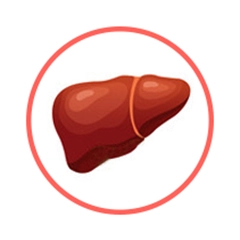
The Liver is a so-called "Zang" Organ. Learn more about the Liver in Chinese Medicine
Kidney and Liver Yin Deficiency
Pulse type(s): Empty (Xu), Floating (Fu)
Tongue coating: Partial absence of coating
Tongue color: Red
Symptoms: Tics Vertigo Fatigue Tinnitus Insomnia Dry eyes Dry hair Dry skin Dizziness Dry mouth Sore back Headaches Dry throat Dry vagina Dry stools Amenorrhea Joint pain Infertility Hot flushes Night sweats Blurred vision Scanty periods Delayed period Excessive tear Lower back pain Lightheadedness Afraid of light Tingling of limbs Diminished hearing Vertical headaches Occipital headaches Nocturnal emissions Chronic sore throat Hot palms and soles Numbness in the limbs Withered and brittle nails Heat in vaginal and vulvar Feeling of heat in the afternoon Spontaneous and nocturnal emissions Soreness and weakness in the lower back
Qing Gu San is sometimes prescribed by TCM practitioners to treat Kidney and Liver Yin Deficiency. This pattern leads to symptoms such as dizziness, tinnitus, diminished hearing and lower back pain. Patients with Kidney and Liver Yin Deficiency typically exhibit empty (Xu) or floating (Fu) pulses as well as Normal-coloured without coating or with rootless coating.
The Liver stores Blood while the Kidneys store Essence.
Liver Blood depends on Essence for nourishment, while Essence depends on Blood for replenishment. Both have a common source: Grain Qi derived from the Spleen. In terms of Five Elements, the Kidneys nourish the Liver.
A long term Liver Blood... read more about Kidney and Liver Yin Deficiency
Formulas similar to Qing Gu San
Qin Jiao Bie Jia San is 50% similar to Qing Gu San
Qing Hao Bie Jia Tang is 38% similar to Qing Gu San
Qing Jing San is 25% similar to Qing Gu San
Bai Hu Tang is 25% similar to Qing Gu San
Da Yuan Yin is 25% similar to Qing Gu San
Hua Ban Tang is 25% similar to Qing Gu San

